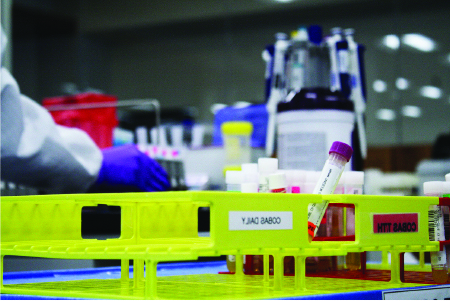Know Your Facts!

In the decades since the causative bacteria associated with Lyme disease was identified (Borrelia burgdorferi), many scientific advancements have occurred that have improved understanding, diagnosis, and treatment of this serious infectious disease. Nonetheless, tickborne diseases are complex, resulting in deceptive fallacies being passed as fact.
Meanwhile, incidences of Lyme disease and other tickborne diseases have more than doubled in the last ten years. As such, the time has never been more urgent to reconcile the misconceptions with the certainties of Lyme disease.
Facts & Myths
 Myth:
Myth:
Lyme disease may often be diagnosed clinically, without laboratory confirmation.
 Fact:
Fact:
It’s true that about 60-80% of Lyme disease infections occur with a telltale rash – the erythema migrans or “bull’s eye” rash. When a patient exhibits this rash in the right geography and the right season – for example, if the patient was recently in an area where Lyme disease is endemic – a physician may begin treatment accordingly and with confidence.1
However, this doesn’t mean laboratory confirmation is redundant: it’s also true that 10-20% of patients with Lyme disease are co-infected with other tickborne diseases, especially in areas where multiple tickborne diseases are endemic.
Thus, it’s crucial for a physician to confirm clinical observations, even in the presence of erythema migrans, in order to rule out co-infection and/or the presence of other diseases.
 Myth:
Myth:
Laboratory testing for Lyme disease is unreliable.
 Fact:
Fact:
Most cases of Lyme disease can be confirmed by laboratory testing if the right test is performed at the right time. In fact, almost half of all cases of Lyme disease are misdiagnosed because the wrong test is ordered. 3
There are still many advancements to be made regarding simple, accurate and comprehensive testing for tickborne diseases. But this is not to suggest that the testing tools currently available for order by physicians and clinics are unreliable. They simply have varying degrees of effective application depending on the stage of infection.
 Myth:
Myth:
Lyme disease and other tickborne diseases can’t be transmitted outside of relevant geographical and seasonal conditions.
 Fact:
Fact:
The time between spring and summer is often referred to as tick season. Highly wooded areas like the Northeast and Upper Midwest are endemic areas.
However, these conditions are not exclusive for spread of tickborne disease: adult ticks may still spread disease out of season, in non-endemic areas. In fact, tick bites have been reported across nearly every state in the United States, and tickborne diseases have been documented in all seasons. 4 While patients and physicians should be most alert during spring and summer in endemic areas, they should not dismiss the possibility of infection outside of these conditions.
 Myth:
Myth:
Only FDA-cleared or FDA-approved tests accurately measure Lyme disease.
 Fact:
Fact:
The development of tests and treatment methods for tickborne diseases is an ongoing challenge. In 2019, the FDA approved a long-awaited new testing paradigm, called Modified Two-Tiered Testing (MTTT), as an alternative to Standard Two-Tiered Testing (STTT), eliminating the need for any Western Blot component.
What’s most important in the diagnosis and treatment of Lyme disease is choosing the right test, at the right time, for the right reason. For example, a serologic test may be most appropriate to accurately diagnose Lyme arthritis, and paired simultaneous serum and CSF antibody testing is necessary to diagnose central nervous system Lyme disease. Some of these Lyme testing methodologies for special indications are of established benefit and advantage, despite being LDT’s (laboratory developed tests) that are not yet formally FDA approved.
 Myth:
Myth:
After the initial diagnosis and treatment is complete, it is recommended that follow-up Lyme serologies be done; the results can be used to help determine the need for additional treatment.
 Fact:
Fact:
Persistent positive serologies are the rule following treatment and resolution of Lyme infection. Antibodies, which result in positive serology results, can persist for many years, even decades after the active infection has resolved. Current guidelines recommend against routine follow-up serologies in patients with uncomplicated Lyme disease after antibiotic treatment.
References:
1. Guidi AJ and Sauder K. Laboratory testing for suspected acute tick-borne infections. College of American Pathologists Member Resources. 2019 Aug: 1-8.
2. Theel ES, Aguero-Rosenfeld ME, Pritt B, Adem PV, and Wormser GP. Limitations and confusing aspects of diagnostic testing for neurologic Lyme disease in the united states. Journal of Clinical Microbiology. 2019 Jan; 57(1): e01406-18.
3. Halperin JJ, Baker P, and Warmer GP. Common misconceptions about Lyme disease. 2013 Mar; 126(3): 264.e1-264.e7.
4. Center for Disease Control Tickborne Diseases of the United States website. https://www.cdc.gov/ticks/tickbornediseases/index.html. Accessed February 18, 2020.

